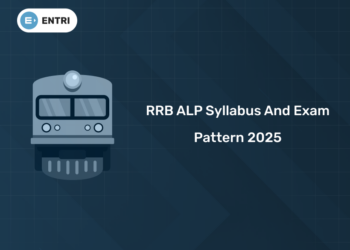Table of Contents
The “Chat Generative Pre-trained Transformer,” or ChatGPT, is a portmanteau of years of machine learning and natural language processing research and development. Unlike traditional chatbots, which depend on preprogrammed responses or rule-based systems, ChatGPT uses generative AI technology to have conversations with users that are dynamic and human-like. Artificial intelligence (AI) has come a long way in the last few years, and these developments are changing many facets of our everyday lives. One of these breakthroughs is ChatGPT, an innovative AI chatbot created by OpenAI.
A major turning point in the history of artificial intelligence is represented by ChatGPT, which is transforming our relationship with technology and raising the bar for what AI is capable of. This innovative feature not only improves user experience but also provides access to a wide range of useful applications across diverse dimensions. We set out on a quest to understand ChatGPT’s inner workings, applications, limitations, and future possibilities in this in-depth investigation. Come along as we explore the intriguing realm of conversational agents driven by AI and see how ChatGPT is changing the face of human-computer interaction.
Power up your career with Entri Elevate! Get Free Demo Classes!
ChatGPT: Importance
The significance of ChatGPT extends beyond its conversational prowess. The sophisticated interplay of neural network architecture, training methodologies, and language modeling techniques is the foundation of ChatGPT’s technology. Through the utilization of cutting-edge artificial intelligence algorithms, ChatGPT exhibits unmatched ability to comprehend and produce text that resembles that of a human, opening the door for revolutionary applications across multiple industries.
- It serves as a testament to the rapid evolution of AI capabilities, demonstrating the power of deep learning models to understand and generate human language at an unprecedented level of sophistication.
- Advanced methods like reinforcement learning from human feedback (RLHF), in which human trainers give corrective feedback to help the model learn, are incorporated into ChatGPT.
- Through the use of an interactive training paradigm, ChatGPT is able to improve its conversational capabilities iteratively through user interactions and response refinement over time.
- Moreover, ChatGPT exemplifies the democratization of AI, offering accessible and user-friendly interfaces that empower individuals from all walks of life to harness the transformative potential of AI technology.
- As we delve deeper into the intricacies of ChatGPT, it becomes evident that its impact reverberates across industries, from education and healthcare to business and entertainment.
- By enabling seamless communication between humans and machines, ChatGPT heralds a new era of AI-driven innovation, where intelligent assistants augment our capabilities, streamline workflows, and enrich our digital experiences.
ChatGPT: All you Need to Know
ChatGPT operates on a sophisticated blend of cutting-edge technology, drawing upon advanced principles of natural language processing (NLP) and machine learning to facilitate seamless interactions with users. Understanding the underlying technology behind ChatGPT provides valuable insights into its capabilities and functionalities.
- At the heart of ChatGPT lies its language model architecture, which forms the foundation for its conversational intelligence.
- The architecture, known as the Generative Pre-trained Transformer (GPT), is a neural network model renowned for its effectiveness in processing and generating natural language text.
- Developed by OpenAI, the GPT architecture has undergone iterative improvements, with ChatGPT leveraging the latest advancements in the series, such as GPT-3.5 and GPT-4.
- The training process of ChatGPT is a pivotal aspect of its functionality, shaping its ability to understand and generate human-like responses.
- During training, the model is exposed to vast amounts of textual data sourced from diverse online sources, including websites, books, articles, and other text corpora.
- This extensive dataset serves as the foundation for learning linguistic patterns, semantics, and contextual nuances embedded within human language.
- One of the key techniques employed in ChatGPT’s training is transfer learning, where the model is pre-trained on a large corpus of text data and subsequently fine-tuned on specific tasks or domains.
- This approach allows ChatGPT to acquire a broad understanding of language dynamics while also adapting to specialized contexts or user preferences.
Explore Free Courses!
Explore Free Courses! Dive into a world of knowledge with our curated selection of free courses designed to help you learn new skills, advance your career, or simply explore your passions.
Start Learning!ChatGPT: Resources in Telugu
OpenAI offers thorough documentation that walks users through the process of using ChatGPT efficiently. To assist users in navigating and comprehending the features of the platform, this documentation usually consists of user manuals, tutorials, API documentation, and frequently asked questions (FAQs). Developers can incorporate the AI model into their own apps and services by using OpenAI’s Application Programming Interface (API) access to ChatGPT. Through programmatic access to ChatGPT’s features via the API, developers can create unique solutions that make use of the platform’s natural language processing capabilities.
ChatGPT: Limitations and Challenges
ChatGPT has limitations and difficulties even with its amazing capabilities. Comprehending these limitations is imperative for efficiently utilizing the technology while averting possible hazards. The Caliber and variety of the data that ChatGPT has been trained on determines how well it can produce answers. Consequently, the model might display biases or limitations present in the training data, resulting in distorted or insufficient comprehension of particular subjects or viewpoints.
- Moreover, ChatGPT’s knowledge is bounded by the temporal scope of its training data, limiting its awareness of recent events or developments.
- Despite its advanced language Modeling capabilities, ChatGPT is susceptible to generating incorrect or nonsensical responses, particularly when confronted with ambiguous or contextually complex queries.
- The model’s reliance on probabilistic inference and pattern recognition may occasionally lead to erroneous interpretations or misleading outputs, necessitating human oversight and verification
- ChatGPT’s understanding of language is inherently contextual, meaning that the accuracy and relevance of its responses are contingent upon the surrounding context provided by users.
- Ambiguous or poorly formulated queries may confound the model, resulting in vague or irrelevant responses.
- Additionally, ChatGPT’s inability to grasp nuanced nuances or subtleties in language may hinder its effectiveness in certain conversational contexts.
A diverse strategy is required to address the constraints and difficulties; this strategy should include continuous R&D, regulatory frameworks and ethical standards, user education and awareness campaigns, and cooperative partnerships between industry stakeholders and the general public. Stakeholders can take advantage of ChatGPT’s revolutionary potential while reducing related risks and guaranteeing responsible AI deployment by proactively addressing these issues.
ChatGPT: Conclusion
Within the quickly changing field of artificial intelligence, ChatGPT stands out as a ground-breaking invention that has completely changed how people communicate with machines. Fundamentally, ChatGPT is an advanced chatbot that uses generative AI to process natural language, allowing for smooth and natural communication between users and the AI.
ChatGPT’s sophisticated language model architecture, which is based on the OpenAI-developed Generative Pre-trained Transformer (GPT) framework, enables it to comprehend and produce text with exceptional coherence and fluency. ChatGPT has been refined to understand subtleties and contextually rich conversations by utilizing enormous volumes of training data from the internet, including books, articles, and websites. This has allowed ChatGPT to facilitate meaningful interactions and offer perceptive answers to user inquiries.
ChatGPT has some drawbacks and difficulties in spite of its amazing abilities. Because it relies on pre-existing data, there is an inherent risk of bias and misinformation. Additionally, because it tends to produce incorrect responses, it needs to be constantly monitored and refined. Furthermore, as ChatGPT spreads throughout numerous domains and applications, it is crucial to maintain ethical AI practices and address societal concerns about privacy, security, and algorithmic fairness. However, ChatGPT continues to be a light of innovation and promise as we work through the challenges of AI-driven conversational agents. It provides a window into a future in which human-machine collaboration will cross boundaries and enable people to reach new heights in productivity and creativity.
| Trending Courses in Telugu | |
| Full stack Development Course in Telugu | Data Science and Machine Learning Course in Telugu |
Explore Free Courses!
Explore Free Courses! Dive into a world of knowledge with our curated selection of free courses designed to help you learn new skills, advance your career, or simply explore your passions.
Start Learning!Frequently Asked Questions
What is ChatGPT
ChatGPT is a state-of-the-art natural language processing chatbot developed by OpenAI. It uses advanced AI technology to understand and generate human-like text responses in real-time.
How does ChatGPT work?
ChatGPT operates on a language model architecture called the Generative Pre-trained Transformer (GPT). It has been trained on vast amounts of text data from the internet, enabling it to understand and generate responses based on context and input.
Who created ChatGPT?
ChatGPT was created by OpenAI, a leading AI research company known for its ground breaking work in artificial intelligence
Is ChatGPT free to use?
Yes, ChatGPT is available for free to the public. Users can access it online or through the official ChatGPT app without any cost.
What can I use ChatGPT for?
ChatGPT can be used for a variety of tasks, including answering questions, generating text for essays or articles, providing coding assistance, and even engaging in casual conversation.
How accurate is ChatGPT?
ChatGPT’s accuracy depends on the quality of its training data and the complexity of the task. While it can provide impressive responses in many cases, it may occasionally generate errors or nonsensical output.
Can ChatGPT learn from user feedback?
Yes, ChatGPT can improve over time with user feedback. OpenAI encourages users to provide feedback on the quality of responses, which can help enhance the model’s performance.
Is ChatGPT available on mobile devices?
Yes, there are official ChatGPT apps available for both iOS and Android devices, allowing users to access the chatbot on their smartphones or tablets.
Does ChatGPT have access to the internet?
The free version of ChatGPT does not have access to the internet. However, users can subscribe to ChatGPT Plus to unlock features like internet access and faster response times.
Is ChatGPT safe to use?
ChatGPT is designed with safety and security in mind. However, users should exercise caution when sharing sensitive information and be mindful of potential privacy risks.










